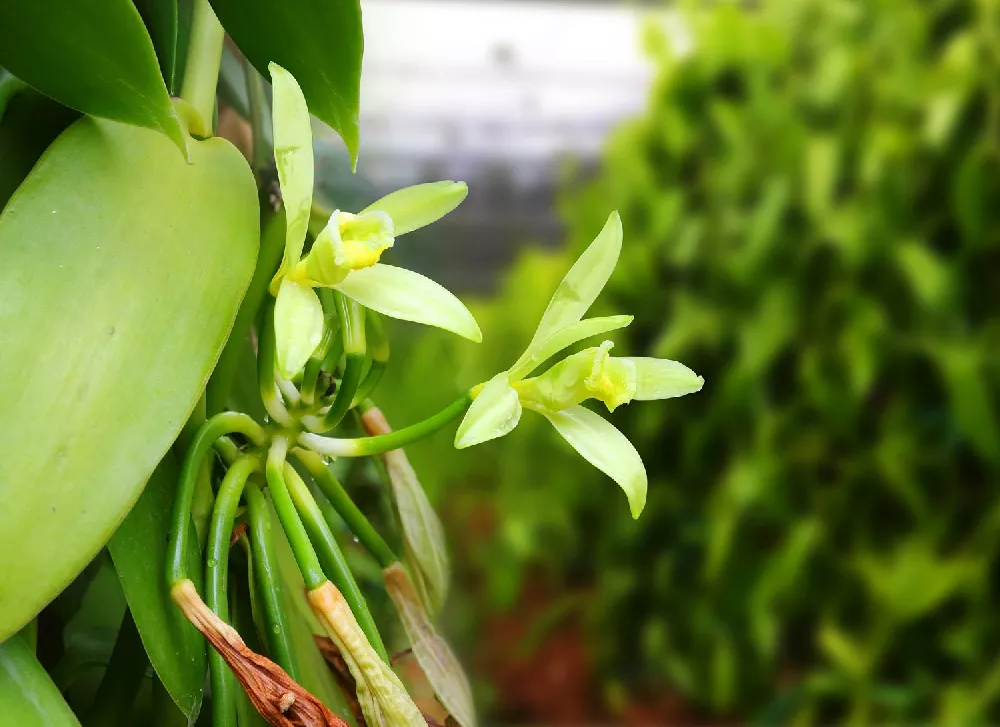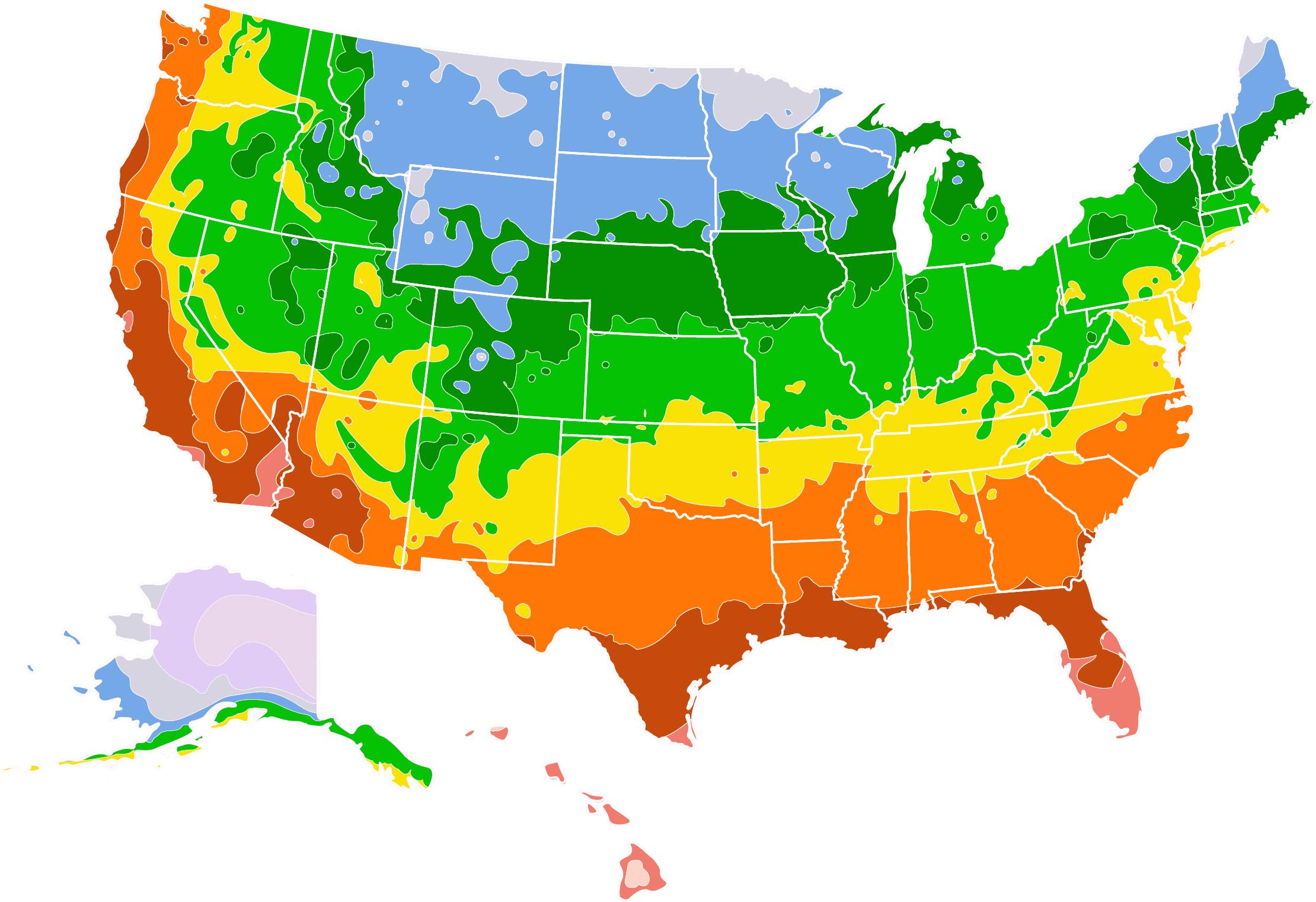Vanilla Bean Plants for Sale
- Ships in 1-2 days
- 1-Year Warranty Eligible
- Pots or accessories are not included unless specified in the product options.
Shipping Details:
Once your order is shipped, you’ll receive an email with a tracking number and estimated delivery date. Most orders ship immediately, but some items are seasonal and may only ship in spring or fall. These products are noted on the website.
The vanilla bean plant (Vanilla planifolia) is an orchid species known for its high vanillin content and use as a vanilla flavoring. The fruit of this plant, referred to as a pod or bean, is harvested and turned into vanilla extract. The tree boasts greenish-yellow flowers and is native to areas of Mexico, Central and South America, and the Caribbean.
- Can be grown indoors.
- Vanilla planifolia thrives in partial sun or full shade.
- The Aztecs and other ancient civilizations commonly used vanilla beans to flavor cocoa.
Plant Care
Sunlight

Vanilla bean plants should be planted in partial or full shade. Indoors, place the plant in an area where it will receive mostly indirect sunlight.
Watering
These plants originate from a tropical environment and should be watered regularly. Indoor vanilla bean plants should be watered whenever the soil is dry two inches under the surface.
Fertilizing

For best results, choose a fertilizer that is designed specifically for orchids.
Planting and Care
Planting instructions
When growing the vanilla bean plant outdoors, locate an area that receives partial or full shade as the plant normally grows in tropical conditions underneath shady canopies. The plant has a vining habit and can be grown indoors in containers. Use organic potting soil and plant in a pot at least 12 inches in diameter. Be sure to provide adequate drainage for the vanilla bean to prevent root rot and support healthy growth. Place your potted plant near a window that receives indirect sunlight.
Watering and nutrients
Newly planted vanilla vines should be kept well-watered. Established plants can go longer between waterings, allowing the soil to dry out to a depth of two inches. Vanilla planifolia is a tropical species and benefits from a humid environment, if your climate is dry, you can mist your plants in the evening. Fertilize your potted vanilla plants every two weeks throughout the spring and summer with a light dose of all-purpose or orchid fertilizer. As the plant matures, a fertilizer regimen will help promote bigger blooms and more fruit production.
Pollination
Indoor-grown vanilla bean plants need to be hand-pollinated to produce the vanilla bean pods. Unpollinated flowers only last one day, so it is important to act efficiently so your vanilla plants bear fruit. To hand-pollinate, just swirl a paintbrush around the inside of each flower. Patience is a virtue when dealing with vanilla plants. Only mature specimens produce flowers and fruit. Vanilla planifolia is self-fertile but having multiple plants near each other increases fruit production.
Pruning
Pruning a juvenile vanilla bean plant is unnecessary, as it takes at least two years to begin producing pods. Once established, the plants only require pruning if any dead, dying, or diseased areas appear. If you want to encourage fruiting and flowering, prune away small suckers as they show up. When growing indoors, the only other time for pruning is if the plant becomes too large. Avoid coming into contact with the plant’s sap when pruning, as it is known to cause allergic reactions and dermatitis.
Pests and diseases
The biggest threat to the vanilla planifolia plant is root rot from overwatering. The best prevention for this is well-drained soil. If a fungal infection does occur, you may need to remove the infected plants to prevent the further spread of the disease. Mealybugs and spider mites are common pest problems for the vanilla bean plant. You can apply rubbing alcohol to a cotton ball and rub the plant’s foliage to get rid of mealybugs. Neem oil and other horticultural sprays help kill and prevent spider mites from attacking your vanilla plants.
Harvesting
Harvesting the vanilla bean pod from the plant requires lots of time, effort, and patience to enjoy the flavorful fruit. After three to five years, the vanilla bean plant will begin producing blooms. When the pollination is successful, the iconic bean pods will be ready for harvest after about nine months. When the tips of the green pods begin to turn yellow, pinch them off. They will then need to undergo a labor-intensive drying and fermentation process to prepare them for consumption.
FAQs
How big do vanilla plants grow?
In ideal conditions, vanilla bean plants can grow up to 150 to 200 feet long.These sizes can vary dramatically, depending on climate, whether the plant is grown indoors or outdoors, and other factors. The plant will produce beans for 10 to 15 years before its output begins to wane, although the vine can live much longer.
Do my vanilla plants need support?
In their natural habitat, Vanilla planifolia grows and climbs on trees and other support plants. If you are growing your vanilla plants outdoors, you will need to plant them near supportive plants or provide artificial support systems. Vanilla’s roots do not tolerate disturbances, so make sure your support is well-established and relatively permanent. Container-grown vanilla plants will require a sturdy stake made of wood, as this will mimic nature and provide a slight boost in moisture and humidity.
How do I cure vanilla pods?
Vanilla pods are not ready to be consumed upon harvesting, first, they undergo a drying and fermentation process, referred to as curing. You will need to alternate the pods between “sweating” and “sunning” for a few weeks. To sweat the pods lay them underneath a blanket or piece of cotton. Then, every day, place them on a flat tray under the sun for approximately three hours. When they are properly dried, you will need to store them in a dry, dark place for about three months to finish curing.
Compare Similar Products
Customer Reviews
 Healthy big vanilla plant
Healthy big vanilla plantThe plant came looking healthy. I can to still repot into its new bigger pot so will see the root system them. I have another smaller plant to compare to and this one looks similar but longer. It is a very slow grower and the chance of it blooming are very low but I'm entertained by the idea and it's a pretty looking vine to me.
 Vanilla bean
Vanilla beanWe finally got one. Very happy about it. Usually sold out. Been trying for over a year to get one.










